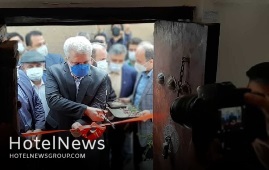
Cultural Heritage, Tourism, and Handicrafts Minister Ali-Asghar Mounesan inaugurated a hotel and two traditional guesthouses during his visit to the central city of Kashan on Tuesday. A budget of five trillion rials ($119 million at the official exchange rate of 42,000 rials per dollar) has been allocated for the establishment of the hotel, which is estimated to generate 120 job opportunities, CHTN reported. The total budget for traditional guesthouses also amounts to 170 billion rials ($4 million), the report added. The guesthouses are expected to create 40 new jobs as well. There is an additional 160 beds to the hospitality sector in the city with the inauguration of the accommodation centers. Kashan is a historical city near Isfahan in the central part of Iran. Its history dates back to over ten thousand years ago, and it is home to some of the most beautiful buildings featuring Islamic architecture. Many travelers opt to pass Kashan on their journeys between Tehran, Isfahan, Shiraz and Yazd, because this delightful oasis city on the edge of the Dasht-e Kavir, is one of Iran’s most alluring destinations. Kashan not only boasts a cluster of architectural wonders, an atmospheric covered bazaar, and a UNESCO-recognized garden, but it also offers some of central Iran’s best traditional hotels. The annual Golab-giri (rosewater distillation) ceremony of Kashan attracts huge crowds to the city every year. Some of the most ancient traces of civilization have been discovered near Kashan, at the Sialk archeological site.
Create: Mar 2, 2021 Edit: Mar 6, 2021 Regional News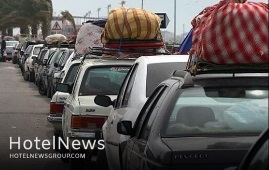
Iran’s Cultural Heritage, Tourism and Handicrafts Ministry has gained official permission for organizing limited intercity travels during the Iran New Year vacations, which begins on March 21. “We have obtained permission for limited Noruz trips from the National Headquarters for Coronavirus Control,” the deputy tourism minister, Vali Teymouri, announced on Tuesday. With less than a month to go till the start of the Iranian New Year, which has long been associated with millions of domestic travels, the ministry wants to find a way to partially revive the already-slumped travels in the face of the COVID-19 pandemic. “The tourism ministry has held several meetings with the National Headquarters for the Coronavirus Control during with we discussed the issues in detail. Based on our strategies, we proposed two travel models that can be implemented following health protocols in the country,” Teymouri said last week. The first [working] model for travels in the Iranian New Year, proposes travels by the means of package tours. “Throughout package tours, travelers benefit from services provided by the tour and they will stay in authorized accommodation centers [and destinations] which are under the supervision of the Ministry of Cultural Heritage, Tourism and Handicrafts,” the official explained. For the second model, people do not go on tours, but when traveling to their destination city, they must stay in authorized accommodation centers, which are under the supervision of the ministry, to comply with all health protocols and maintain public health, Teymouri stated. Any other form of accommodation would be prohibited to curb the virus, he said. “To help prevent the spread of the coronavirus in Noruz 1400, the establishment of tourist camps, camping, tourists staying in places such as schools, shrines, husseiniyahs, etc. is prohibited, and this issue has been announced to the provincial governors.” The arteria of Noruz travels is expected to be announced in detail during the upcoming exhibition for tourism and handicrafts, which will be held in near future, according to the official. The tourism minister, Ali-Asghar Mounesan, publicized in November that mass, unplanned travels are not approved. “The outbreak of the coronavirus has caused damage to the tourism industry in Iran and [other parts of] the world in such a way that according to statistics, 50 million people are directly and indirectly exposed to unemployment due to the virus spread in the global scene…. yet, mass or unplanned and irresponsible travels are not approved to take place during the coronavirus era.” Smart and responsible traveling should replace "do not travel” recommendations, the minister stressed, adding: “In our country, Corona has caused problems in the tourism industry and the worrying point is the continuation of this trend.” “We are well aware of what the National Headquarters for Coronavirus Control proclaims [the health protocols], hence as a proposal, we have formulated some smart, responsible travel packages by the implementation of which we could have secure travels,” the minister said. He has repeatedly announced that his ministry is in full coordination with the Ministry of Health for strictly implementing health protocols in travel destinations, hospitably centers, and museums, amongst others, underlining that “people’s health is our priority.” Iranians traditionally make hundreds of thousands of domestic trips during the New Year holidays, when most businesses and workplaces are closed, as are schools.
Create: Feb 24, 2021 Edit: Feb 24, 2021 Regional News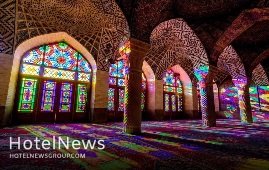
Iran’s tourism industry has suffered a loss of some 220 trillion rials (about $5.2 billion at the official exchange rate of 42,000 rials per dollar) since the outbreak of the coronavirus pandemic, Cultural Heritage, Tourism, and Handicrafts Minister said on Tuesday. “Iran’s tourism has suffered some 220 trillion rials due to corona pandemic so far…. and we hope that with the production of domestic vaccines, tourism will flourish in 1400 [the new Iranian calendar year which begins on March 21],” Ali-Asghar Mounesan said. He made the remarks during the opening ceremony of Tehran’s international tourism and handicrafts fair, which is currently underway at Tehran Permanent International Fairgrounds. “We hope that the widespread vaccine would bring prosperity to all branches of tourism such as agritourism, ecotourism, and nature tourism,” the minister said. “Over 1.5 million jobs have been lost in the tourism sector of Iran due to the COVID-19 disease…. Many of the tourism-insiders are now unemployed or they are staying at home,” Mounesan announced last December. The government had previously allocated a total of 500 trillion rials (about $12 billion) to the corona-affected sectors, of which 200 trillion rials ($4.7 billion) will be given to the health ministry and the rest will be spent on other sectors, he explained. Last month, the minister announced that the national budget bill for the next calendar year (starting on March 20) has proposed 70 trillion rials (about $1.7 billion) to support tourism businesses affected by the coronavirus pandemic. If the budget receives parliament’s approval, it will be injected into different sectors of the tourism industry, which has taken a major hit from the coronavirus outbreak over the previous months, he noted. Despite the toughest economic pressures and sanctions, the government has provided good support to all sectors of tourism, the minister said. However, there is hope that the beginning of mass vaccination against the coronavirus will provide better conditions for tourism and businesses related to this sector, he explained. Government’s care and support packages In late October, the deputy tourism minister, Vali Teymouri, announced that a new support package to pay loans to businesses affected by the coronavirus pandemic has been approved. Depending on the type and activity of the businesses, they could benefit from at least 160 million rials ($3,800) to nine billion rials ($214,000) of bank loans with a 12-percent interest rate, he said. The loans will be allocated to tourist guides, travel agencies, tourism transport companies, tourism educational institutions, eco-lodges and traditional accommodations, hotels, apartment hotels, motels, and guesthouses as well as traditional accommodation centers, tourism complexes, and recreational centers, the official explained. Teymouri pointed to the 1.3 million tourism workers in the country, who are facing several issues due to the coronavirus crisis, and said “This number, in addition to their households, includes a significant population that makes a living through tourism, who are needed to be considered in ministry’s decisions.” Teymouri has said that the tourism ministry has approved a total budget of 4,920 billion rials (over $117 million) to support corona-affected tourism businesses, covering as much as 36,000 people working in the tourism sector.
Create: Feb 24, 2021 Edit: Feb 24, 2021 Regional News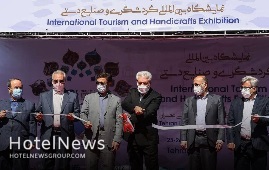
Tehran’s international tourism and handicrafts fair opened to the public on Tuesday in defiance of a government campaign to improve the hugely-battered travel sector in the face of the novel coronavirus. Cultural Heritage, Tourism, and Handicrafts Minister Ali-Asghar Mounesan and his deputies for tourism, and handicrafts were amongst attendees to the opening ceremony of the fair, which is underway at Tehran Permanent International Fairgrounds. Activists, including tour operators, hoteliers, transport businesses, and tour guides, are hopeful that such days would be numbered at the COVID-19 vaccine is getting more widespread. Since it first surfaced late in 2019, the pandemic has created a greater demand for experiences away from crowds, which is opposite to many traveling pillars. Experts say that such preference for solo travel would probably continue till a coronavirus vaccine is ever-present. “Safe and Responsible Travels” has been picked as the motto of the four-day event that according to organizers could help boost synergy among the two sectors as people have a chance to visit them maybe in a day-long visit! The event is being held according to health protocols announced by the National Headquarters for Coronavirus Control, and following the necessary coordination with the relevant agencies in this field, according to Vali Teymouri, the deputy minister for tourism. Travel agencies, airlines, sea or rail companies, entrepreneurs, startups, banks, insurance brokers, agents or hospitals in charge of health, medical tourism, sports clubs, pilgrimage & eco-tourism companies, representatives of hotels, guesthouses, touristic villages, and free zones are amongst exhibitors in the tourism sector. Furthermore, tens of booths and stands in various exhibition halls have been dedicated to craftspeople, artisans, live performers, and tribespeople who are coming together from every corner of the ancient land to promote skills inherited from generation to generation. Though its main goal of the sales exhibit is to make money and sails of the handicrafts, souvenirs, foodstuff, and various other regional products, it can be a venue for dialogue between exhibitors and visitors and even visiting officials, according to organizers. The fair showcase arrays of personal ornamentation, woodwork, illuminated manuscript, miniature, textile printing, enamel, leatherwork, handwoven textile, calligraphy, traditional musical instrument, metalwork, and marquetry among tens of others while nomadic culinary arts, live workshops, and performances that would gather own fans every corner. Iran expects to reap a bonanza from its numerous tourist spots such as bazaars, museums, mosques, bridges, bathhouses, madrasas, mausoleums, churches, towers, and mansions, of which 24 being inscribed on the UNESCO World Heritage list. Under the 2025 Tourism Vision Plan, it aims to increase the number of tourist arrivals from 4.8 million in 2014 to 20 million in 2025. So it will undeniably try its best to achieve a relatively ambitious goal but when that happens the travel industry is likely to look more altered.
Create: Feb 24, 2021 Edit: Feb 24, 2021 Regional News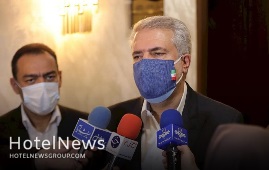
Iranian tourism minister Ali-Asghar Mounesan on Tuesday inaugurated 206 tourism-related projects in Tehran province through a video conference. The tourism infrastructure of Tehran province is essentially needed to be developed due to its political and commercial importance, IRNA quoted the minister as saying during the inauguration ceremony. The projects, which include hotels, apartment hotels, eco-lodge units, tourist complexes, boutique hotels, traditional restaurants, travel agencies, and handicrafts workshops, are estimated to generate 936 jobs. Furthermore, the mentioned projects will be adding 816 beds to the hospitality sector of the Iranian capital. Establishing more eco-lodges as well as different types of accommodation centers could facilitate traveling and staying in this metropolis, the minister said. Referring to the outbreak of the coronavirus and the problems and issues it has caused to the travel sector, Mounesan noted that smart travels under the supervision of the tourism and health ministries is the only way to overcome the current situation. Hugging the lower slopes of the magnificent, snowcapped Alborz Mountains, Tehran is much more than a chaotic jumble of concrete and crazy traffic blanketed by a miasma of air pollution. This is the nation's dynamic beating heart and the place to get a handle on modern Iran and what its future will likely be. The metropolis has many to offer its visitors including Golestan Palace, Grand Bazaar, Treasury of National Jewels, National Museum of Iran, Glass & Ceramic Museum, Masoudieh Palace, Sarkis Cathedral, Tehran Museum of Contemporary Art, Carpet Museum of Iran, to name a few. The first time Tehran is mentioned in historical accounts is in an 11th-century chronicle in which it is described as a small village north of Ray. It became the capital city of the Seljuk Empire in the 11th century but later declined with factional strife between different neighborhoods and the Mongol invasion of 1220.
Create: Feb 20, 2021 Edit: Feb 20, 2021 Regional News
The Jerusalem Municipality, at the initiative of Mayor Moshe Leon, will begin vaccinating all hotel employees in the capital tomorrow (Tuesday). The vaccinations will be held in the coming days in a concentrated manner, for all HMO members in all the vaccination complexes throughout the city. Hotel workers, who have not yet been vaccinated, can come to the vaccine complexes to be vaccinated against the corona virus. Jerusalem Mayor Moshe Leon said that "during this period we are preparing to open tourism in the city of Jerusalem as soon as we are allowed to open by the government." "During this period, we are preparing the tourism industry for a quick and safe opening as soon as possible. All hotel employees are asked to come to the vaccination complexes. Only together can we win," Leon said.
Create: Feb 9, 2021 Edit: Feb 9, 2021 International News
The first-ever hotel in the city of Rey, southeast of Tehran, was inaugurated on Tuesday on the occasion of Ten-Day Dawn (Jan. 31- Feb. 10, marking the victory anniversary of the Islamic Revolution), ISNA reported. The inauguration ceremony was attended by Mohammad Mohammadi Reyshahri, the custodian of the Holy Shrine of Shah Abdol Azim, and Anushiravan Mohseni Bandpey, the governor-general of Tehran province, and several local officials and tourism insiders. A budget of 800 billion rials (about $19 million at the official exchange rate of 42,000 rials per dollar) has been allocated to the project which adds 42 rooms and 108 beds to the hospitality sector of the city, the provincial tourism chief Parham Janfeshan announced on the sidelines of the ceremony. The construction and inauguration of this hotel will lead to the development of religious tourism infrastructure in the city, which will bring more welfare to the pilgrims of the Holy Shrine of Shah Abdol Azim, Janfeshan said. Construction work of the hotel took four years in a piece of land covering more than eight hectares, he added. The history of settlement in Rey dates from the 3rd millennium BC. It is featured in the Avesta (the original document of Zoroastrianism, an Iranian religion) as a sacred place, and it is also mentioned in the book of Tobit, of the biblical Apocrypha, and by classical authors. According to Encyclopedia Britannica, Rey was one of the capital cities of the Parthian empire (3rd century BC–3rd century CE). It was captured by the Muslim Arabs in 641 CE. During the reign of the Muslim caliph al-Mahdi in the 8th century, the city grew in importance until it was rivaled in western Asia only by Damascus and Baghdad. Islamic writers described it as a city of extraordinary beauty, built largely of fired brick and brilliantly ornamented with blue faience (glazed earthenware). It continued to be an important city and was briefly a capital under the rule of the Seljuqs, but in the 12th century, it was weakened by the fierce quarrels of rival religious sects. In 1220 the city was almost entirely destroyed by the Mongols, and its inhabitants were massacred. Most of the survivors of the massacre moved to nearby Tehran, and the deserted remnants of Rey soon fell into complete ruin. Rey, however, retains enough history to give it a different sensibility, its key sight is the elaborately decorated Shah Abdol Azim Shrine. Beside the shrine complex is a lively bazaar, while further afield are a couple of minor historical attractions.
Create: Feb 5, 2021 Edit: Feb 6, 2021 Regional News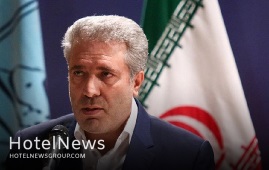
Iran seeks to register ancient Siraf port and several other southern seaports on the UNESCO World Heritage list in near future, Cultural Heritage, Tourism and Handicrafts Minister Ali-Asghar Mounesan has said. “We are developing a dossier [to be submitted to UNESCO] for the global registration of Siraf and several other important ports, [which are dotted across Bushehr province] in the southern coastal strip of the country,” Mounesan said on Tuesday. “The noble people of Bushehr should be waiting for the registration news,” Mounesan noted. He made the remarks during his visit to Bushehr, which is one of the most significant historical regions along the Persian Gulf, embracing significant monuments from the Elamite, Achaemenid, Parthian, and Sassanid eras. The historical port of Siraf was the most important Iranian port from the Sassanid period to the 4th century AH. It bears plentiful evidence of Persian mastership and genius in seafaring, international relations, and interaction with other near and far cultures and civilizations. Between 1966 and 1973, the British Institute of Persian Studies conducted seven seasons of excavation and survey at Siraf, which was a major city on the Iranian shore of the Persian Gulf that played a leading role in the network of maritime trade that supplied Western Asia with the products of India, the Far East, and Eastern Africa between 800 CE and 1050. Siraf had a population of about 300,000 during the early Islamic era and this fact shows that it was a large city. However, today, just about 7,000 people live in Siraf in a small area. The historical and architectural monuments of Bushehr include Islamic buildings like mosques and praying centers, mansions, old towers, castles, as well as gardens. Bushehr province is also home to various archaeological mounds including Tall-e Khandaq with Sassanid architectural style, Tall-e Marv located near an Achaemenid Palace, and Qajar era Malek al-Tojar Mansion. Traveling to the Persian Gulf region would be an experience that you probably haven’t even considered. While you’ve been planning your Iranian sojourn around the jewels of the country’s rich history (Isfahan, Shiraz, Yazd), to the southeast the Persian Gulf is equally deserving. Explore the magnetic islands of Kish, Qeshm, and Hormuz, which are absurdly easy to combine and are altogether different. While Kish is unashamedly glam and glitzy, Qeshm and Hormoz are refreshingly void of large-scale development and offer a chance to glimpse a more traditional way of life – not to mention an array of geological wonders. Along the coast, soak up the vibes of lively Bandar Abbas and make a beeline for the delightful town of Kong, whose historical center is peppered with charming old houses and monuments.
Create: Feb 5, 2021 Edit: Feb 6, 2021 Regional News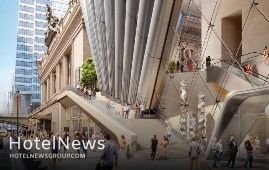
A new building is poised to transform the area around a New York City landmark and one of its busiest subway stations. Image renderings released Tuesday by RXR Realty show what would eventually be 175 Park Avenue, an 83-story tall structure that developers say will be the new Grand Hyatt hotel that will also revitalize the Grand Central Terminal with brand new public spaces. The plan is to demolish the current Grand Hyatt over the course of the next year and build the 1,646 feet tall building with up to 500 hotel rooms, 2.1 million square feet of new office space and make improvements to infrastructures around the Grand Central-42nd Street subway station. The 5,400 square feet hall would feature more signage, train schedules and arrival times, and ticketing and turnstiles will be relocated to street level to ease foot traffic. The new entrance to 42nd Street subway station will be where the ADA elevator is currently located but developers say the reconfiguration will make a more efficient route for customers with disabilities. The changes also include upgrades to the Lexington Avenue entrance where the sidewalk is expected to widen by five feet As for additional public spaces, RXR Realty said there will be three interconnected public terraces that wrap around the eastern, northern, and western sides of the building and that they will be accessible by elevator. Similar to the High Line, the Grand Central Terrace, Chrysler Terrace and Graybar Terrace will "create new vistas for pedestrians to view the neighborhood’s historic architecture" with space for outdoor seating and food and beverage concessions, the news released said.
Create: Feb 4, 2021 Edit: Feb 4, 2021 International News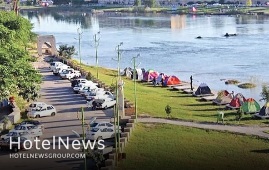
Well-planned travels during the Persian New Year (Noruz) holidays, which will start on March 20, would be possible in close coordination with the National Headquarters for Coronavirus Control, the deputy tourism minister said on Tuesday. In order to create social vitality during the holidays, the ministry has set some rules for possible Noruz trips to control and monitor them carefully, Vali Teymouri said. “The trips will be possible only within the framework of planned tours through licensed travel agencies and under the supervision of the tourism ministry.” For people, who travel individually and outside of the tours, a reservation for an authorized accommodation center will be necessary, the official added. He also emphasized that all travelers and tourists need to follow strict health protocols during their trips and stays. Last March, which is the most bustling and booming period for the tourism sector because it culminates in Noruz, all celebrations were canceled in all 31 provinces across the country, and all museums and historical sites, affiliated with the Ministry of Cultural Heritage, Tourism and Handicrafts went on a lockdown due to the coronavirus pandemic. Last year, before the Persian New year, the tourism minister Ali-Asghar Mounesan asked people to postpone or reschedule tours to help the tourism industry deal with the coronavirus outbreak. “My suggestion to my dear people is that they do not cancel their hotel reservations and domestic tours as far as possible to help the tourism industry and prevent it from bankruptcy by making their reservations in time after the virus is controlled.” Iranians made 74 million overnight stays in their domestic trips during the Noruz holidays two years ago (2019), which showed a 20 percent increase year on year. And some 132 million visits to tourist attractions were registered during the mentioned period, which showed a 34 percent growth year on year, according to data compiled by the Ministry of Cultural Heritage, Tourism and Handicrafts. The Islamic Republic was ranked the third fastest-growing tourism destination in the globe in 2019, with 27.9 percent growth year on year, according to the latest statistics released by the United Nations World Tourism Organization (UNWTO). However, the country expects to reap a bonanza from its numerous tourist spots. Under the 2025 Tourism Vision Plan, it aims to increase the number of tourist arrivals from 4.8 million in 2014 to 20 million in 2025.
Create: Feb 4, 2021 Edit: Feb 4, 2021 Regional News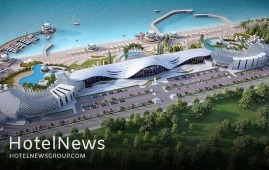
Iranian President Hassan Rouhani on Tuesday inaugurated tens of tourism-related projects via a video conference on the occasion of Ten-Day Dawn (Jan. 31- Feb. 10, marking the victory anniversary of the Islamic Revolution). A total investment value of 14 trillion rials (about $334 million at the official exchange rate of 42,000 rials per dollar) is channeled through the projects countrywide, Cultural Heritage, Tourism, and Handicrafts Minister Ali-Asghar Mounesan announced on Monday. Tourism-related projects worth 220 trillion rials ($5.2 billion) had previously come on stream since President Rouhani inaugurated his second four-year term in 2017. With these new projects being taken into account, the total investments in this sector are added up to 234 trillion rials ($5.5 billion), which is a new record, the tourism minister explained. The Ministry of Cultural Heritage, Tourism and Handicrafts has played an important role in the country’s currency earnings, as in 2019, the tourism sector’s share of the country’s GDP was $11.8 billion, which is a very significant number, Mounesan said. Referring to passenger flows, he stated some 8.8 million foreign nationals visited the Islamic Republic during the first ten months of the past Iranian year 1398(March 20, 2019-March 19, 2020) before the coronavirus outbreak puts almost everything on a halt. Despite the coronavirus pandemic and the damages it has caused to the country’s tourism, this sector is still running and several projects are underway, the official added. Back in August, the minister announced that Iran’s travel sector has suffered a loss of 12 trillion rials (some $2.85 billion) since the outbreak of the coronavirus pandemic, however, he mentioned that all the tourism businesses across the country will have the capacity to fully resume their activities both in domestic and foreign markets. “Many tourism projects have been completed, or are being implemented, showing that a very good capacity has been created in the field of tourism in the country and [this trend] should not be stopped,” he explained. Mounesan went on to say that 2,451 tourism-related projects worth 1,370 trillion rials (around $32 billion) are being implemented across the country that signals a prosperous future for Iran’s tourism sector. The tourism minister also said the coronavirus pandemic should not bring traveling to a complete standstill. “Corona is a fact, but can the virus stop tourism? Certainly not. For us, the coronavirus is a new experience in dealing with crises that teaches tourism experts around the world how to deal with such a disaster, and thankfully governments are turning this into an opportunity for better planning.” Some experts believe that the coronavirus pandemic may turn tours and travels into luxury items as observing health protocols will raise the cost of travel in the country. Mohammad Ali Vaqefi, the vice president of the Iranian Tour Operators Association, warned earlier in June that with the continuation of the coronavirus outbreak, tourists may prefer individual travel rather than tours, adding that they may also choose to go on a trip by their vehicles and stay in tents or nature instead of hotels. In the global scene, part of the new travel puzzle is the jet-set mindset focusing on tough hygiene care and social distancing as cardinal guidelines for slowing the spread of the virus. So the average expenditure will be raised for a typical traveler particularly inbound passengers so lesser ones can afford to buy privacy and space and safer travel amenities. Iran expects to reap a bonanza from its numerous tourist spots such as bazaars, museums, mosques, bridges, bathhouses, madrasas, mausoleums, churches, towers, and mansions, of which 24 being inscribed on the UNESCO World Heritage list. Under the 2025 Tourism Vision Plan, it aims to increase the number of tourist arrivals from 4.8 million in 2014 to 20 million in 2025. The latest available data show eight million tourists visited the Islamic Republic during the first ten months of the past Iranian calendar year (started March 21, 2019).
Create: Feb 4, 2021 Edit: Feb 4, 2021 Regional News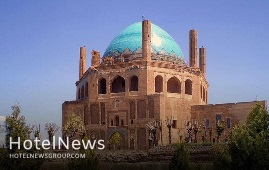
The cultural heritage and tourism directorate of Iran’s Zanjan province is set to launch a photography contest on the UNESCO-registered Dome of Soltaniyeh and its surrounding historical and touristic sites. Competitors are requested to post works to the Instagram account of the directorate from January 31 to February 9, provincial tourism chief Amir Arjmand announced on Tuesday. A panel of professional media photographers will be judging the contest, and winners will be honored with exquisite prizes, the official said. “This competition is to be held to highlight the importance of preserving natural and cultural heritage, monuments, antiquities, museums that exist in [the city of] Soltaniyeh,” he said. The UNESCO-listed Mausoleum of Oljaytu, which is commonly known as “Dome of Soltaniyeh” (Soltaniyeh Cupola), is one of Iran’s must-visit destinations for those interested in traditional Persian and genuine Islamic architecture. The mausoleum is surmounted by one of the largest brick domes in the globe, though some mistakenly refer to it as “the largest dome in the world”. Meaning “Town of the Sultans”, Soltaniyeh was briefly the capital of Persia’s Ilkhanid dynasty (a branch of the Mongol dynasty) during the 14th century. According to UNESCO, the Mausoleum of Oljaytu is an essential link and key monument in the development of Islamic architecture in central and western Asia. Here, the Ilkhanids further developed ideas that had been advanced during the classical Seljuk phase (11th to early 13th centuries), during which the arts of Iran gained distinction in the Islamic world, thereby setting the stage for the Timurid period (late 14th to 15th centuries), one of the most brilliant periods in Islamic art. UNESCO says, “Excavations carried out in the 790-ha Mausoleum of Oljaytu property have revealed additional vestiges of the old city, and a large part of this property has retained its archaeological character. As the ancient capital of the Ilkhanid dynasty, Soltaniyeh represents an exceptional testimony to the history of the 13th and 14th centuries in Iran.” The very large dome is the earliest extant example of its type and became an important reference for the later development of the Islamic dome. Similarly, the extremely rich interior of the mausoleum, which includes glazed tiles, brickwork, marquetry, or designs in inlaid materials, stucco, and frescoes, illustrates an important movement towards more elaborate materials and themes.
Create: Jan 30, 2021 Edit: Jan 30, 2021 Regional News
